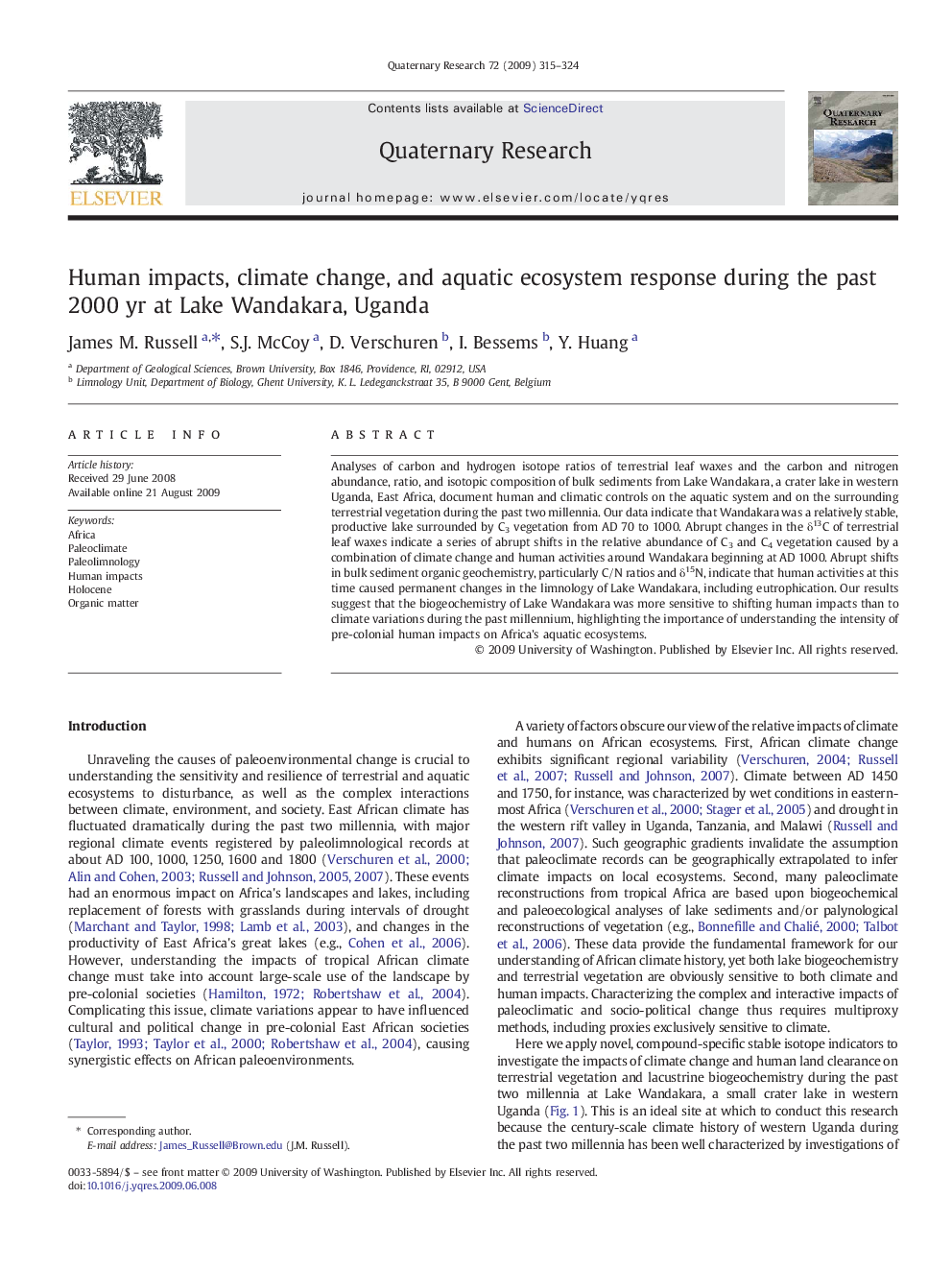| کد مقاله | کد نشریه | سال انتشار | مقاله انگلیسی | نسخه تمام متن |
|---|---|---|---|---|
| 1045849 | 944837 | 2009 | 10 صفحه PDF | دانلود رایگان |

Analyses of carbon and hydrogen isotope ratios of terrestrial leaf waxes and the carbon and nitrogen abundance, ratio, and isotopic composition of bulk sediments from Lake Wandakara, a crater lake in western Uganda, East Africa, document human and climatic controls on the aquatic system and on the surrounding terrestrial vegetation during the past two millennia. Our data indicate that Wandakara was a relatively stable, productive lake surrounded by C3 vegetation from AD 70 to 1000. Abrupt changes in the δ13C of terrestrial leaf waxes indicate a series of abrupt shifts in the relative abundance of C3 and C4 vegetation caused by a combination of climate change and human activities around Wandakara beginning at AD 1000. Abrupt shifts in bulk sediment organic geochemistry, particularly C/N ratios and δ15N, indicate that human activities at this time caused permanent changes in the limnology of Lake Wandakara, including eutrophication. Our results suggest that the biogeochemistry of Lake Wandakara was more sensitive to shifting human impacts than to climate variations during the past millennium, highlighting the importance of understanding the intensity of pre-colonial human impacts on Africa's aquatic ecosystems.
Journal: Quaternary Research - Volume 72, Issue 3, November 2009, Pages 315–324